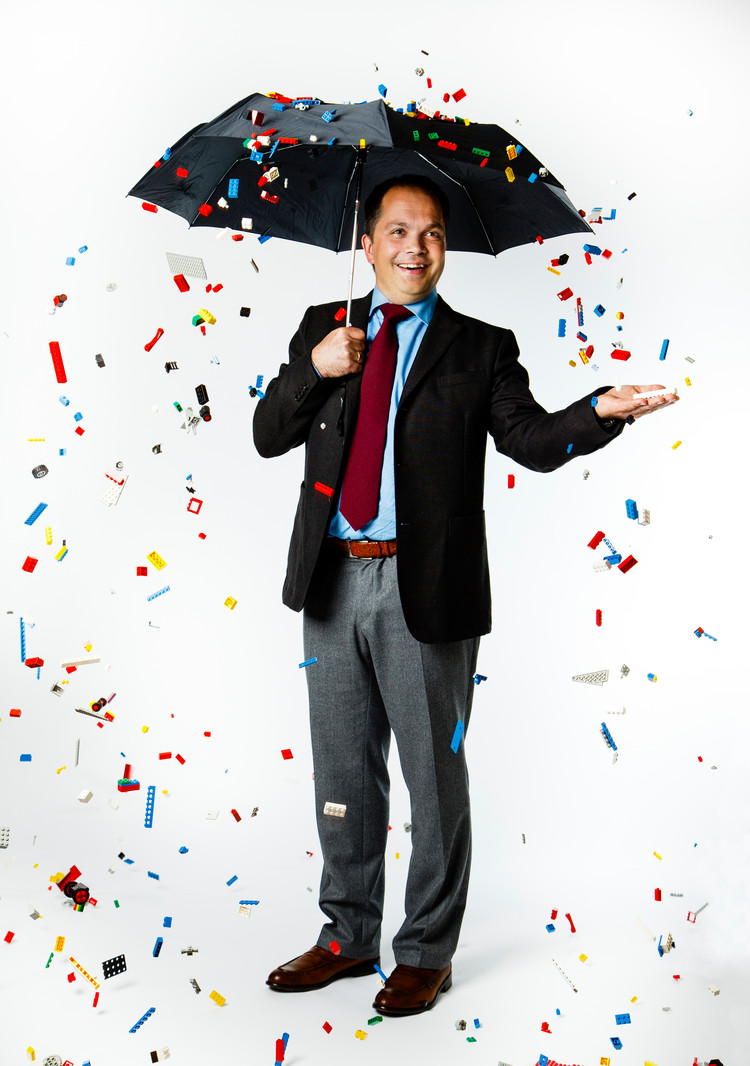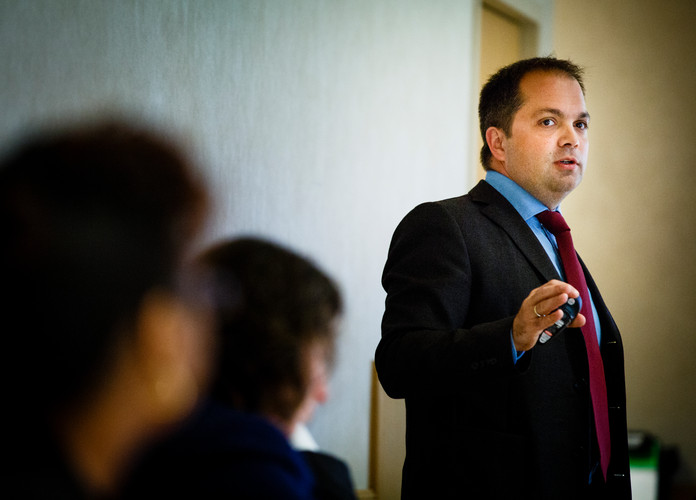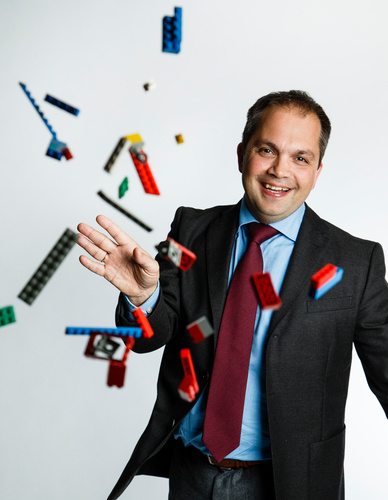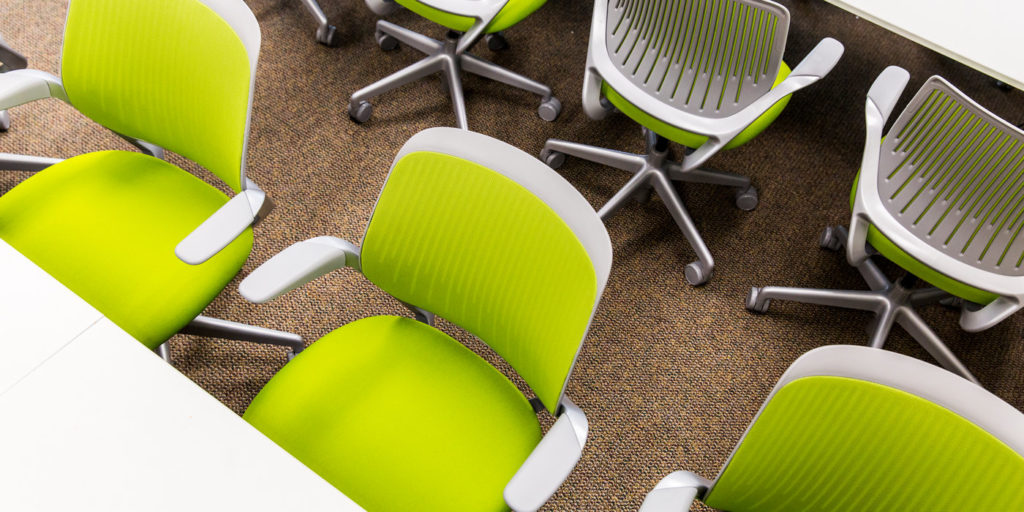What do you think when you hear the word LEGO? Building? Imagination? Awesome?
The LEGO Group is owned by the third and fourth generations of the Kristiansen founding family: Kjeld Kirk Kristiansen and his three children. It was founded in the 1930s, and the LEGO brick as we know it launched in 1958. For decades, the LEGO brand has been a household name and favorite of children and parents alike. Children love the possibilities that it offers, and parents love the creativity it inspires.
Recently, Rico Ferrarese, a senior strategic risk manager at LEGO, gave us an inside look at his role and what it’s like to work for a company with a much-loved brand such as LEGO.

Rico Ferrarese
Do you have a strong memory of the LEGO products?
I do indeed. My mom, who is a kindergarten teacher, has always enjoyed the LEGO products in her work as well as at home. I still have my LEGO train from my childhood. I’m also a fan of some of the newer LEGO products, including LEGO Architecture and LEGO Technic [expert builder series].
What makes LEGO such an enduring brand?
LEGO has been around for generations. The product is incredibly versatile and can be reused over and over again. The clutch power of the bricks, the play within the play – these are a few of the reasons the LEGO brand has endured over the years. The brand and product offer something everyone is looking for – endless possibilities. The LEGO Group seeks to “inspire and develop the builders of tomorrow.” The organization’s culture is based on five values: fun, creativity, learning, caring and quality.
FACT: On average, each person on Earth owns 94 LEGO bricks.
How does The LEGO Group define risk?
When looking at opportunities and threats, a risk is something that can affect a planned outcome in a negative way. When we are able to mitigate the risk before it becomes a serious issue, we have turned it into an opportunity. Awareness of potential risks and opportunities allows the organization to plan what and when a response is necessary versus when an issue can be ignored. We call this a conscious choice. Our mission in strategic risk management is to drive conscious choices.
What does your title mean? What does your typical work day look like?
I’m a senior strategic risk manager. Senior means that I am experienced and valued as a business partner. Strategic means that I am involved in must-win battles and long horizon projects and large business impact changes. The risk manager part of my title defines my responsibilities within all those changes and projects.
Overall, my job is to balance the perspectives and to support business teams to prioritize risks and opportunities. At the end of the day, my role is part of the CFO’s stewardship agenda where our mission statement is to drive conscious choices – a fantastic way of saying that we want the leaders and managers to consciously focus on the choices that they will implement. My role is primarily to be part of project teams and support the project leads in running and managing the risks and opportunities within their roles and responsibilities.
I do not have any days that look alike. Normally I read emails and look through the agenda when I get up in the morning and am in and out of meetings all day long. My tasks include everything from marketing and IT to supply chain management, building factories and developing new products. I also prepare reports and challenge briefs to management teams around The LEGO Group.
FACT: There are 915 million ways to combine six LEGO bricks of the same color.
 What is a risk manager’s most important job?
What is a risk manager’s most important job?
The most important part of my job is to drive conscious choices in a way that manages the uncertainty for the business. We, as risk managers, have to support and push the business unit managers to make conscious choices instead of relying solely on their gut.
What types of risks does LEGO face?
The big challenge of a toy company in the major leagues is that time is a scarce resource and, therefore, we need to stay relevant to our consumers – the kids and builders of tomorrow. Nowadays, time to play is not always an acceptable way to learn and grow. We at LEGO Group believe that by building with our toys, children have an opportunity to stimulate creativity and problem solve in a way that inspires them to create something totally new. But the biggest challenge we are facing is the fight for kids’ time.
As with any global company, I think the risk of not getting the right talent and developing them to become the leaders of tomorrow is one big risk. It is also important that our culture promote failure; not every endeavor will find success. Accepting that and creating an environment that fosters learning from failure will help ensure our continued success.
FACT: As of 2013, LEGO had ZERO product recalls for the fourth year running.
What brought you to LEGO and this role?
The LEGO Group has been my daily work life for the last nine years. I’ve had several different responsibilities at the executive level ranging from key account management, marketing and now strategic risk management. When approached about the opportunity to join a newly established function [under] Hans Læssøe – with a knowledge and mindset that just blow me away – I just had to say yes.
During the last five years we have had different organizational reports, but Hans and I have managed to track changes and manage the process to the benefit of The LEGO Group. I accepted the position because of Hans’ open-minded approach toward how to lead and how to manage. In his words, leading and guiding are the ways to inspire and to motivate his employees. Together, we have designed, developed and implemented the processes that we now have, ranging from enterprise risk management (ERM) reports, project risk management and the creation of a strategic development toolbox.
Can you share an experience that most shaped the professional you are today or role you are currently in?
Definitely my years in the army as an officer as well as meeting Hans Læssøe. The years in the military helped me understand the power of leading people instead of managing them. It also provided me with the ability to identify and direct conflicts to find mutual ground. Hans has been my mentor in understanding The LEGO Group and my role as a risk professional.
 What’s the most interesting part of your job?
What’s the most interesting part of your job?
Many aspects of my job are interesting, such as working with those from other cultures and parts of the world, interacting with new managers, understanding the rationales and reasons behind big decisions, and so much more. If I had to choose one, it is certainly the variety of projects and business plans that I am involved in and see come to life.
FACT: More than 5 billion mini figures have been produced – making it the world’s biggest population group.
What’s something unexpected about your job?
That, even though I am a specialist in strategic risk management, I am involved in the whole business – not just in corporate finance, but also in the development of products, logistics, facilities, etc. The variety of tasks and insights is sometimes overwhelming and makes me humble.
What’s your favorite part of the job?
The dialogue and the process of digging into a subject and developing an understanding of challenges, problems, uncertainties and, of course, risks and opportunities. The best days are those when I have transformed a risk into a positive change or even an opportunity.
FACT: The LEGO name is made from the first two letters of the Danish words “leg godt,” meaning “play well.”
Read more from B. Magazine.







